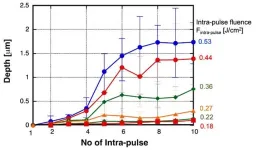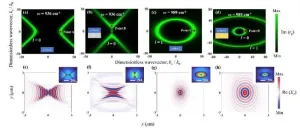(Press-News.org) Ronen Rozenblum, PhD, MPH, director of the Unit for Innovative Healthcare Practice & Technology and director of Business Development of the Center for Patient Safety Research and Practice at Brigham and Women's Hospital, and an assistant professor at Harvard Medical School, is the principal investigator and senior author of a new study published in JMIR Medical Informatics, “A Machine Learning Application to Classify Patients at Differing Levels of Risk of Opioid Use Disorder: Clinician Based Validation Study.”
How would you summarize your study for a lay audience?
Our study focused on using advanced machine learning (ML) to help clinicians more accurately identify patients at risk of developing opioid use disorder (OUD). Despite strict guidelines for managing opioids, OUD remains a serious public health issue. We evaluated an ML application called MedAware, which alerts clinicians to patients who may be at higher risk of OUD by analyzing patient records. Our findings showed that ML can provide clinicians with reliable alerts about a patient’s level of risk. This kind of technology has the potential to significantly enhance how physicians and other clinicians assess and treat OUD, with the goal of providing more accurate, safer, and personalized care for patients early in their opioid treatment.
What question were you investigating?
This clinical validation study investigated how well the ML system compared to clinicians’ assessment of a patient’s risk of OUD. We examined the agreement between the ML application and clinicians’ structured review of medical records to classify patients receiving opioid treatment into three distinct categories of OUD risk (i.e., not high risk, high risk, or suspected OUD). We also evaluated the reasons for discrepancies between clinicians’ judgements and ML risk assessment.
What methods or approach did you use?
Outpatient data of 649,504 Mass General Brigham patients and a random sample of 180 patients were used to develop the ML model and the validation study, respectively. We developed an OUD risk classification scheme and data extraction tool to validate these alerts. Clinicians independently conducted a systematic and structured review of medical records and reached a consensus on each patient’s OUD risk level, which was then compared to the ML application’s risk assignments.
What did you find?
Our findings revealed that the ML application successfully classified patients into differing levels of OUD risk and demonstrated substantial agreement with clinicians’ review of medical records. The highest agreement between the two methods was observed for patients classified as high risk for OUD and suspected OUD. Thus, the results of this study demonstrate that this ML application can generate clinically valid and useful alerts for screening patients at risk of OUD. Additionally, we identified key themes explaining disagreements between the ML application and clinician reviews.
What are the implications and next steps?
The significance of these findings lies in the fact that only a limited number of studies have examined the clinical validity and utility of ML applications in distinguishing between various levels of OUD risk in patients. These results suggest that ML applications, such as MedAware, can significantly enhance clinicians’ ability to assess patients’ risk for OUD early in opioid treatment, promoting more personalized and safer care. This capability is expected to complement traditional rule-based approaches in alerting physicians and other clinicians about opioid safety issues.
Authorship: In addition to Rozenblum, Mass General Brigham authors include Tewodros Eguale, Wenyu Song, Yasmin Elsobky, Angela Rui, Marlika Marceau, Clark Davis, Sandya Ganesan, Ava Alsubai, Michele Matthews, Lynn A Volk, and David W Bates. Additional authors include François Bastardot and Daniel Motta-Calderon.
Paper cited: Eguale, T et al. “A Machine Learning Application to Classify Patients at Differing Levels of Risk of Opioid Use Disorder: Clinician-Based Validation Study” JMIR Medical Informatics DOI: 10.2196/53625
Funding: This work was supported in part by MedAware, Ltd.
END
Research spotlight: Machine learning helps identify patients at varying levels of risk for opioid use disorder
2024-07-08
ELSE PRESS RELEASES FROM THIS DATE:
Detroit researchers receive Department of Defense grant to assist in discovering new treatments for ovarian cancer
2024-07-08
DETROIT — Gen Sheng Wu, Ph.D., professor of oncology in the Wayne State University School of Medicine and the Barbara Ann Karmanos Cancer Institute, recently received a grant from the U.S. Department of Defense’s Congressionally Directed Medical Research Programs.
This four-year, $924,000 grant will benefit Wu’s study, “Targeting Dual-Specificity Phosphatase 1 in Platinum Resistance in Ovarian Cancer,” which aims to discover improved treatments for ovarian cancer.
“Ovarian cancer ...
Acupuncture reduces methadone dose and opioid cravings in patients undergoing methadone maintenance therapy
2024-07-08
Embargoed for release until 5:00 p.m. ET on Monday 8 July 2024
Annals of Internal Medicine Tip Sheet
@Annalsofim
Below please find summaries of new articles that will be published in the next issue of Annals of Internal Medicine. The summaries are not intended to substitute for the full articles as a source of information. This information is under strict embargo and by taking it into possession, media representatives are committing to the terms of ...
Novel compound offers improved defense against fentanyl overdoses
2024-07-08
Scientists at the University of Florida have identified a novel compound aimed at improving the treatment of opioid overdoses, which claimed the lives of more than 81,000 Americans last year.
The discovery could combat the devastating epidemic of opioid-related deaths, driven predominantly by the proliferation of fentanyl. The highly potent synthetic opioid is a pain reliever and among the nation’s most abused substances.
“Fentanyl is driving the need to find better treatments for opioid overdoses,” said Jay McLaughlin, Ph.D., a professor of pharmacodynamics in the UF College of Pharmacy. “Every opioid death is preventable, highlighting ...
NIH awards Wake Forest University School of Medicine $27 million to study vascular health and its impact on cognition
2024-07-08
WINSTON-SALEM, N.C. – July 8, 2024 – Researchers at Wake Forest University School of Medicine have been awarded a five-year, $27 million grant from the National Institute on Aging (NIA), part of the National Institutes of Health (NIH), to renew funding for MESA-MIND, an ancillary study to the Multi-Ethnic Study of Atherosclerosis (MESA).
In 2018, researchers at Wake Forest University School of Medicine received more than $18 million from the NIA to launch MESA-MIND to study the connections between heart health and brain health.
“In MESA-MIND, we are studying how heart health contributes to brain health in diverse groups of people,” said Timothy Hughes, Ph.D., ...
College of Public Health receives NIH grant to pilot AI chatbot for African Americans with depression
2024-07-08
As a leader in innovative health solutions, George Mason University’s College of Public Health received a National Institutes of Health (NIH) AIM-AHEAD program grant to pilot an artificial intelligence (AI) chatbot for Black and African Americans with depression. Health Informatics Professor Farrokh Alemi will enhance his first-of-its-kind, evidence-based artificial intelligence tool to address the medication needs of African Americans with depression.
The existing AI tool recommends antidepressants for 16,775 general-population patient subgroups, each representing a unique combination of medical history. For each of ...
RCMAR Annual Meeting promotes mentorship and research on aging
2024-07-08
The latest Annual Meeting convened by the Resource Centers for Minority Aging Research (RCMAR) National Coordinating Center, held in Arlington, Virginia, from June 26 to 28, centered on the theme of transforming diverse aging research through inspiring and mentoring scientists.
Current and former RCMAR scientists presented research findings from completed pilot studies and progress updates for ongoing research. The meeting included several professional development sessions for the scientists and members of RCMAR ...
Exploring distress experiences of patients with sickle cell disease
2024-07-08
COLUMBUS, Ohio – While distress is well-documented in patients with sickle cell disease, sources of distress and how patients manage distress have not been well explored.
“Our study found that the most profound source of distress for patient with sickle cell disease in a home visit program was anticipating and going to acute care centers to manage their acute pain,” said senior study author Maryanna Klatt, PhD, director of the Center for Integrative Health at The Ohio State University Wexner Medical Center.
Study findings are published ...
Super-resolution machining of single crystalline sapphire by GHz burst mode femtosecond laser-induced plasma assisted ablation
2024-07-08
A new publication from Opto-Electronic Advances; DOI 10.29026/oea.2024.240029 , discusses super-resolution machining of single crystalline sapphire by GHz burst mode femtosecond laser-induced plasma assisted ablation.
GHz burst-mode femtosecond (fs) laser, which emits a series of pulse trains (burst pulse) with extremely short intervals of several hundred ps, offers distinct characteristics in materials processing as compared with conventional fs laser (single-pulse mode). The authors of this article have demonstrated that the GHz burst mode fs laser greatly improves ablation efficiency, quality and speed. GHz burst mode fs laser was further applied ...
Boosting UV light absorption in 2D semiconductor with quantum dot hybrids for enhanced light emission
2024-07-08
A new publication from Opto-Electronic Advances; DOI 10.29026/oes.2024.240002 , discusses boosting UV Light Absorption in 2D Semiconductor with quantum dot hybrids for enhanced light emission.
Two-dimensional (2D) transition metal dichalcogenides (TMDs) have emerged as a promising class of materials due to their remarkable properties. These materials, such as monolayer tungsten disulfide (1L-WS2), are just a few atoms thick, yet they possess intriguing electronic and optical characteristics that make them highly attractive for various applications, from flexible electronics ...
The forbidden propagation of hyperbolic phonon polaritons and applications in near-field energy transport
2024-07-08
A new publication from Opto-Electronic Advances; DOI 10.29026/oes.2024.230053 , discusses forbidden propagation of hyperbolic phonon polaritons and applications in near-field energy transport.
Manipulating photons on the nanoscale to develop integrated and miniaturized optoelectronic devices as well as photonic chips has been a strong pursuit of the nanophotonics community. Among them, phonon polaritons supported by two-dimensional layered van der Waals (vdW) materials, which have emerged in recent years, have attracted much attention by virtue of their ultra-long lifetimes, ultr-low losses, and strong confinement capabilities, ...




